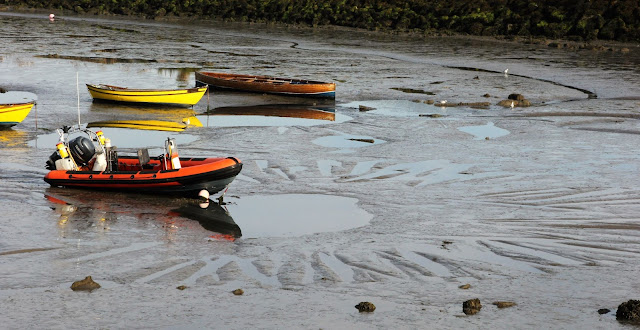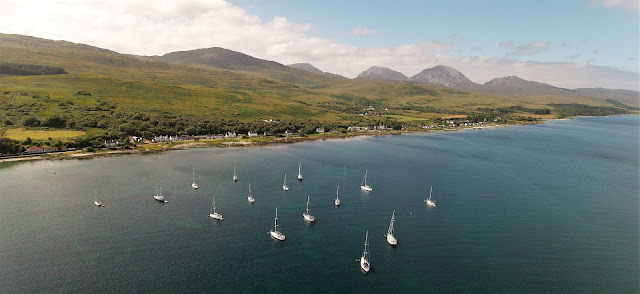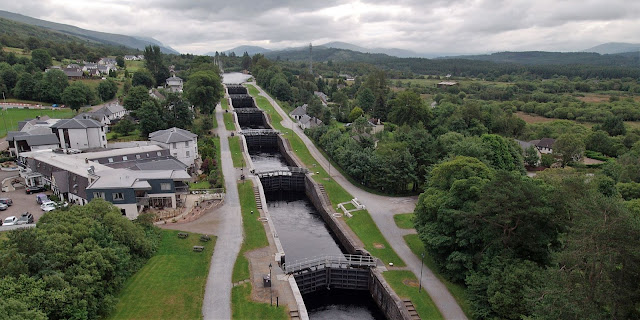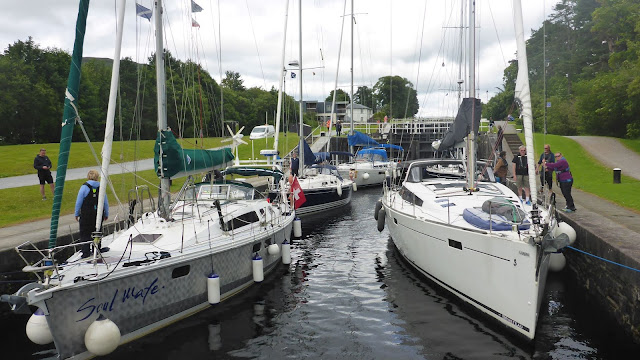Our time in Howth, waiting for the wind direction to change to a more friendly direction, gave us the opportunity to take the 30-minute DART train into Dublin for a day's sight-seeing. Unfortunately we picked the hottest day in Dublin for 135 years (33.2 degrees C) so a rain-starved city with no shortage of bars but, apparently, not enough toilets smelled chiefly of impatience. There was a lot of litter around, too, and the streets were full of foreign tourists - which included ourselves, we suppose. Anyway, despite this, we enjoyed walking through Trinity College, found a great cafe away from the tourist hot spots for a light lunch, had the obligatory overpriced pint of Guinness in Temple Bar and climbed aboard the Jeanie Johnston.

On average, the length of the transatlantic journey was 47 days. The most passengers she ever carried was 254, from Tralee to Quebec on 17 April 1852. To put this number in perspective, the replica ship is only licensed to carry 40 people including crew.
Despite the number of passengers, and the long voyage, no crew or passenger lives were ever lost on board the Jeanie Johnston. This is generally attributed to the captain, James Attridge, not overloading the ship, and the presence of a qualified doctor, Richard Blennerhassett, on board for the passengers."
The replica was commissioned in the 1990's and was designed to meet all the latest safety standards, including watertight bulkheads, fire suppression systems and high-tech engines and generators, but the complex project was dogged by delays and overspends. The original cost had been projected at £4.26m sterling (~€5.8m) in 1993 and the final cost was just under 14 million Euro in 2002, funded by the Government, the EU and various sponsors. The final figure included the seagoing ship, shipyard, workshops and visitor centre at Blennerville, cost of launch, fit out at Fenit and the cost of training in shipbuilding skills to some 50 unemployed young people.
Her life as a working sail training vessel was very short and by mid-2010 the decision was made to operate the ship as a museum on the river because she was no longer in seagoing condition. In 2011, significant water damage was discovered, but repair work wasn't carried out until three years later due to lack of funding to dry dock the vessel.
According to a valuation obtained by Kerry County Council in 2002, the Jeanie was then worth 1.27 million Euro. In 2015, she was valued at 150,000 Euro, a pretty spectacular rate of depreciation! The tour was interesting, to learn some of the history of the Famine exodus, but it was really sad to see the beautifully built replica slowly falling apart due to lack of funding.
 |
| Di at the helm. Note the woodwork crying out for new varnish |
On Wednesday, the wind finally moved to the NW so we left Howth at 04.00 to catch the south-bound tide. Along the coast are a series of shallow sandbanks, some with only a couple of metres of water covering them, so we navigated inside them and completed a very easy 41nm passage to the little port of Arklow. Arklow was lovely except for two, related, issues. First, there's a huge, 140-million euro project underway to build a new sewage processing plant for the town so the place reverberated to the sound of pile-driving and drilling. Second, and the reason for the project, is that raw sewage is currently just released into the river, with one of the out-falls being just a few metres from our pontoon berth. After days of no rain here, the river flow was very slow so the place just stank. Such a shame as the town itself was quite attractive and the Harbour Master very friendly and welcoming. However, until the sewage works is completed (In September 2025!) you don't so much berth in Arklow, as go through the motions. Another early start the following morning saw us happy to leave.

 |
| Flying the Parasailor, dead downwind, with two poles for stability in the slightly rolly sea |
Our next destination was a fishing village called Kilmore Quay which has a mildly challenging, dredged channel approach but an excellent, sheltered harbour with a small marina.
Most of the big fleet of fishing boats were tied up in port when we arrived, making navigating past them in the narrow entrance a little interesting. Nicky the Harbour Master told us that they are currently being paid up to 82,000 euro per boat for a month to remain ashore due to fishing quotas. Our final Irish coastal passage saw another 04.30 start to head west to Kinsale, an 81nm, 13-hour passage in very little wind so the engine ran for most of the way.
Kinsale will be our final port in Ireland and it's a great place to visit. It's a huge sailing centre and the self-styled Gourmet Capital of Ireland, so is very popular with visiting boats. Too popular, it transpired, because we discovered that all three marinas were fully booked and we were lucky to get a last-minute cancellation in Castlepark Marina. Normally we'd have happily anchored in the river but the weekend weather was forecast to be wet and windy (and the forecast has come true!).
 |
| The final approach into Kinsale |
 |
| Castlepark Marina is a 30-minute walk via the road bridge into town, but we were very glad to have its shelter |
 |
| The C17 battery of Fort James at the tip of the promontory |
It transpired that we would have very good protection in the marina as our neighbour is an Irish Customs cutter. We were boarded by two Customs officers once we'd tied up so the boat was given a fairly cursory search by one while the other took all of our details in a process that reminded us of our time in New Zealand and Australia.The most important reason for coming to Kinsale was that our goddaughter Belle is working over here and so we had a lovely long lunch with her in town yesterday.
Tomorrow the brisk south-westerlies swing round to the north-west, a perfect direction for us to sail for Falmouth (with an option to stop in the Isles of Scilly if we feel like it). |
| The wind direction looks good, we just hope that the sea state isn't too rough after a couple of days of strong winds. |
Falmouth is about a 27-hour sail from here and we need to plan our departure to reach Land's End and Lizard Point at the right moment for favourable tides. We'll report on our progess in a couple of days' time.




















































